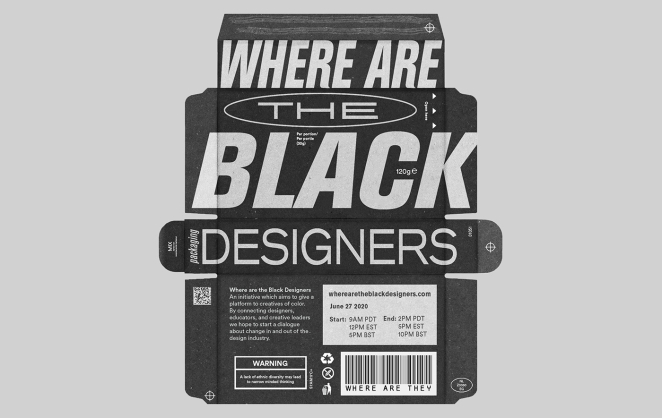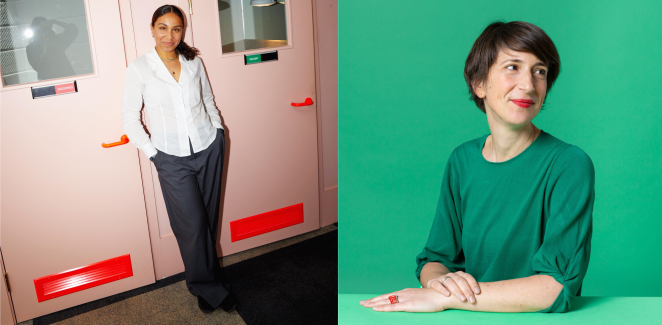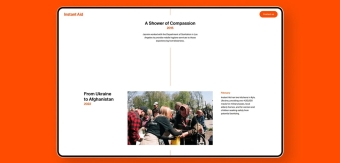Making real, lasting change is not a solo endeavour. If we want to make the design industry represent the world around us, we need partnerships that bring together different perspectives and resources.
So design advocacy organisation Where Are the Black Designers?, which supports Black creatives, and digital product design studio ustwo, teamed up last year to pioneer a new type of partnership between a non-profit supporting industry change and a socially-engaged for-profit company. In the first year of our partnership, we’ve reached more than 1,000 Black creatives in over 20 cities around the world.
We recently published a joint impact report, ‘Equity through Service’, on the work we’ve done together, why our partnership is needed, and what’s made our collaboration successful and rewarding for everyone involved.
Effective partnerships need common goals
According to the non-profit “She Runs It’s 2023” #Inclusive100 report on representation in advertising, media and adtech, only 6% of managers and 4% of corporate executives in these creative industries are Black. And while clear stats are hard to come by – which can be a major blocker in effecting change – we know that design isn’t diverse enough, either.
So we asked ourselves, how might we support Black talent in the design industry, with the ultimate aim of making our industry more inclusive in the future? We know as designers that solving any challenge starts with understanding the needs and pain points of our audience.

We kicked off by surveying Black designers in the WATBD community (which is also made up of around 40% allies) – who are located around the globe, from Lagos to London to Seattle and New York, to find out who they are and what they want and need from our partnership.
We found that 73% of the members we surveyed were design professionals looking to improve their skills, and that their top three areas of interest were meeting other Black designers (87%), meeting Black design industry leaders (68%) and mentorship opportunities (56%).
Effective partnerships bring in all stakeholders
To meet the needs of the WATBD community, we put on a programme of ten events across our first year to fulfil different needs of the collective, including meet-ups with recruiters, portfolio reviews with ustwobies, talks with Black design professionals and maker’s markets. We addressed topics like salary expectations, launching a design career and finances.
While we held in-person events at ustwo studios in London and New York, facilitating the social connections the community wanted, we also wanted to widen our reach to match our international audience.

So we brought events online as well, like a talk around financial literacy, and held our first virtual portfolio reviews in February, with attendees around the globe. As both of our organisations are international, bringing the reviews online also allowed more ustwobies to participate as mentors!
Bringing in voices from multiple disciplines always leads to richer engagement. While our programming mostly revolves around the needs of Black design professionals at all career stages, we also welcomed and championed a wider community of Black creatives. For instance, our events included maker’s markets in New York and London, where we highlighted the work of community members across many media, from ceramics to comic books to clothing.
Effective partnerships need investment
Change won’t happen if we don’t invest in it. ustwo contributed $115,000 across the first year of the partnership for programming as well as monthly funds for the WATBD team to compensate them for the time they spent on partnership activities. And the company hired Black vendors for our events, from catering to photography. Too often, labour in social change initiatives goes unpaid – and that’s an impediment to progress. Supporting creatives requires recognising their work.

We engaged members of the WATBD to design the graphics for each of our events and deferred to their creative visions, rather than WATBD’s or ustwo’s own branding, while WATBD community member Annika Hansteen-Izora designed the impact report. “We need spaces like WATBD where there are tangible and supportive resources and communities for Black designers. I’m honoured to have supported their work,” they said.
Looking forward together
The partnership has been a true exchange of perspectives, networks and knowledge. Both WATBD and ustwo have developed, grown and learned throughout.
We’re thrilled to continue our partnership. While we’re proud of what we’ve achieved together, there is always more to be done.
“Spaces like WATBD are so essential in an industry where Black voices are often left at the margins,” Annika says. “I’m excited to see the ways that the platform will continue to grow.”

By Roshannah Bagley, Head of Operations and People at It’s Nice That and Helen Fuchs, Design Director at ustwo.







